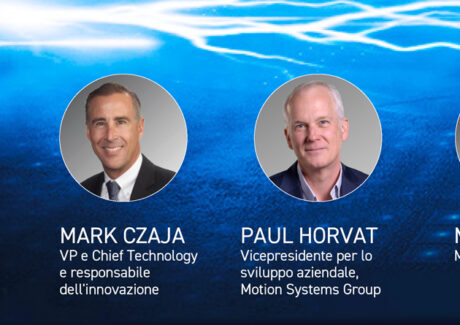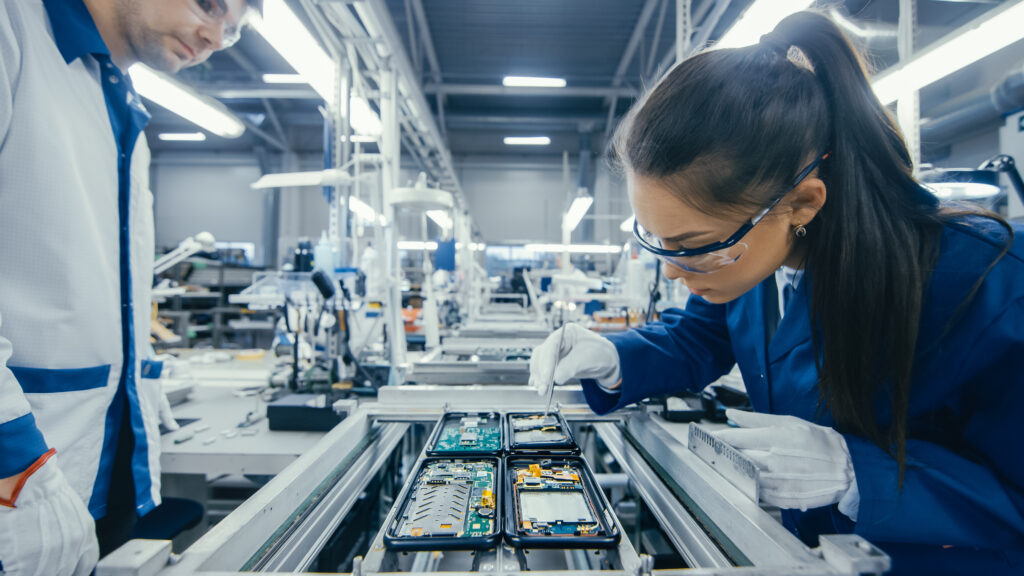In an online meeting, Parker has called a team of experts to talk about the future developments of electric mobility. The result? A very interesting conversation and a fascinating survey, indeed.
If we talk about the next future, the electric mobility is a mandatory issue. It represents one of the most tangible technological changes that are taking place in people’s daily life. «A change that is going to become structural, as driven by the climatic change» affirms Mark Czaja, VP and Chief Technology & Innovation Officer. As confirmation of that, we can mention the numerous policies that support a zero-emission mobility: the Green Deal is the European example, but also overseas – for instance in California or India – various measures exist to develop the electric mobility.  The political will, anyway fundamental for the success of the technology, is completed – according to Paul Horvat, VP for Business Development Motion System Group – by other three factors that, together, are playing a decisive role in the current affirmation of the electric mobility: citizens’ higher and higher environmental awareness, the commitments that numerous world-class brands have made to electrify their commercial fleets – let us think of Amazon or Pepsi Cola – and the technology development that releases more and more variegated solutions on the market, able to satisfy the requirements of increasingly numerous users, with more autonomy and costs that become more affordable year by year.
The political will, anyway fundamental for the success of the technology, is completed – according to Paul Horvat, VP for Business Development Motion System Group – by other three factors that, together, are playing a decisive role in the current affirmation of the electric mobility: citizens’ higher and higher environmental awareness, the commitments that numerous world-class brands have made to electrify their commercial fleets – let us think of Amazon or Pepsi Cola – and the technology development that releases more and more variegated solutions on the market, able to satisfy the requirements of increasingly numerous users, with more autonomy and costs that become more affordable year by year.
Positive numbers for electric
However, what do numbers witness? Is electric really spreading successfully or is it just a sensation? In a world context where automotive registrations in general suffer, also owing to the pandemic, electric traction vehicles score positive figures, with even two-digit growth percentages year by year. In Italy, for instance, in 2021, 67,255 full electric units were registered, almost the double compared to the 32,500 units registered in 2020. Concerning hybrid plug-in, 69,499 units were registered in the year versus 27,389 units in 2020[1]. In Europe, in the third quarter, the demand for full electric vehicles increased by 56.7%, whereas electric hybrid plug-in vehicles scored + 42.6% of registrations. We expect that in 2021, in the world, the sales of electric vehicles reach 6.4 million units in all. With these, at the end of 2021, 16.4 million electric vehicles would travel on the roads in the world[2]. Who would have thought that we would have reached these numbers, the current performances and aesthetics levels? «The first electric machines run, but they were not fine at all» states Czaja. Today, on the contrary, electric vehicles have nothing to envy to conventional ones, for both performances and aesthetics.
More and more application ambits
Therefore, they are not sensations. Numbers are then clear, but they are not the only ones that grow. The use ambit of the electric vehicle is enlarged, too: after the vehicles for the personal transport, now also the urban micro-mobility is “tinged” with electric. More and more commercial light vehicles become electric and this makes them highly suitable for last-mile deliveries in urban centres; and furthermore: off-board, off-road work vehicles and agricultural means. Applications increase year by year. On the road for now, only heavy vehicles have less adopted electric but owing to technological issues still unsolved. In other words? The battery!
Mobility in evolution
Batteries constitute a “hot” matter for the electric mobility. They constantly improve in terms of storage power, of lower use of raw materials, of new recycling technologies, in order to create a circular economy also for them and, last but not least, of costs. «However, we have not a battery for all requirements, yet» Czaja affirms. The heavy transport, for instance, needs a power density that is still unavailable and still unacceptable recharge times. «Concerning these vehicles, we must look at the development of fuel cells that will be fundamental for the transition from the internal combustion engine of this category» Horvat affirms.
The transport electrification is an evolution that takes place step by step and, irrespective of how fast it has been until now, it needs that all the pieces of the puzzle on which it depends evolve in parallel: the battery optimization in terms of both technology and costs, the enlargement of recharge infrastructures, the modification of electric networks and finally a bigger quantity of electricity from renewable source. Because just using renewable energy, mobility will be really green and will be able to share in fighting the climatic change.
Password: multiple skills!
As Horvat affirms, also from the manufacturer’s point of view, the evolution towards electric implies some epochal changes: the vehicle must be completely redesigned and re-engineered, components differ from standard ones; the themes to be faced are different. The solution very often resides in the matching between traditional technologies – hydraulics, for instance – and new technologies – electro-mechanics. How can a company face these changes at best? «We need the capability of looking at things as at a whole system» Horvat states. Thinking from a system perspective helps in developing more technologies simultaneously. Czaja ends: «Relying on knowledge in more ambits is certainly a key issue and allows standing out on the market».

Reorganizing according to a system perspective
Parker has reorganized its activity according to a system perspective, too. «We have set up our in-house “Motion Technology Center”, grouping from various divisions people with diversified competences, but anyway needed for the electric development. This to be able to start reasoning according to a system perspective, not replacing what we do in single divisions but enhancing it. In this way, we are implementing a sound technological base that will be used in this fabulous electrified world we are entering» the two experts state.
Electrical: end of hydraulics?
«A question I am often asked is whether electrical will determine the end of hydraulics» Horvat states. «Hydraulics is very “skilful in accomplishing its tasks”: no other technology allows reaching the same power density in such a small space and working under critical environmental conditions. Then, no, hydraulics will not disappear so easily. Simply, it will be supported by electromechanics. An “electric” version of hydraulics will successfully spread».
How will the future be?
To the question: «What future do you expect or do you wish for electric?» Czaja answers: «Believing that at present electrical is here to remain, I think that in the next future we will see more and more electric vehicles also where they are less diffused. At the same time, we will have a better connectivity and these two elements together – electrification and connectivity – will lead to new developments such as predictive maintenance or autonomous vehicles»
Horvat as well foresees a widening of use sectors, especially towards heavier vehicle classes: «The possibility of using hydrogen will be fundamental for these classes, possibly produced with renewable energy. However, batteries will remain essential for the other vehicles and it is important their performance goes on improving».
[1] MOTUS-E: le auto elettriche raddoppiano
[2] https://www.ev-volumes.com



